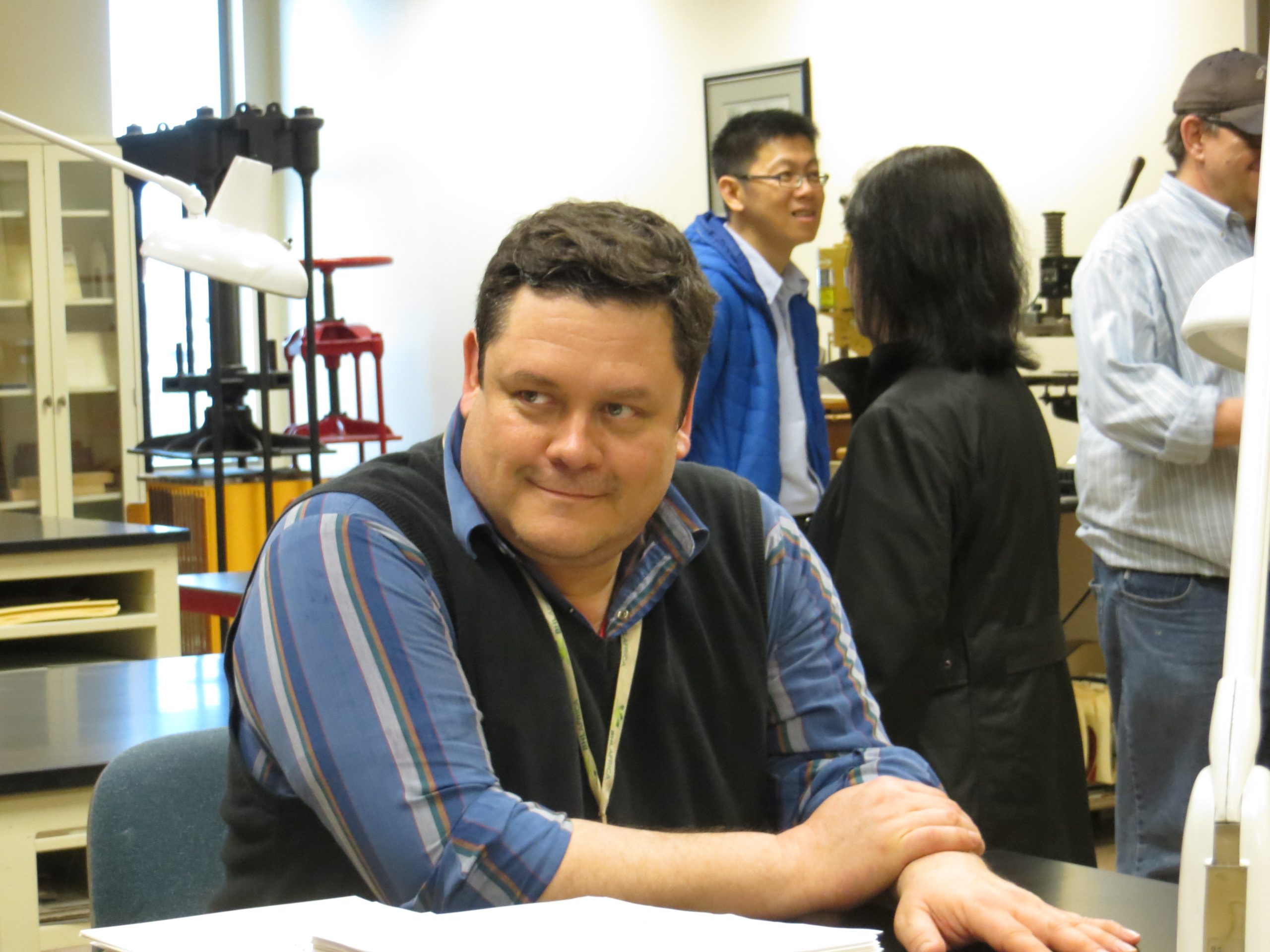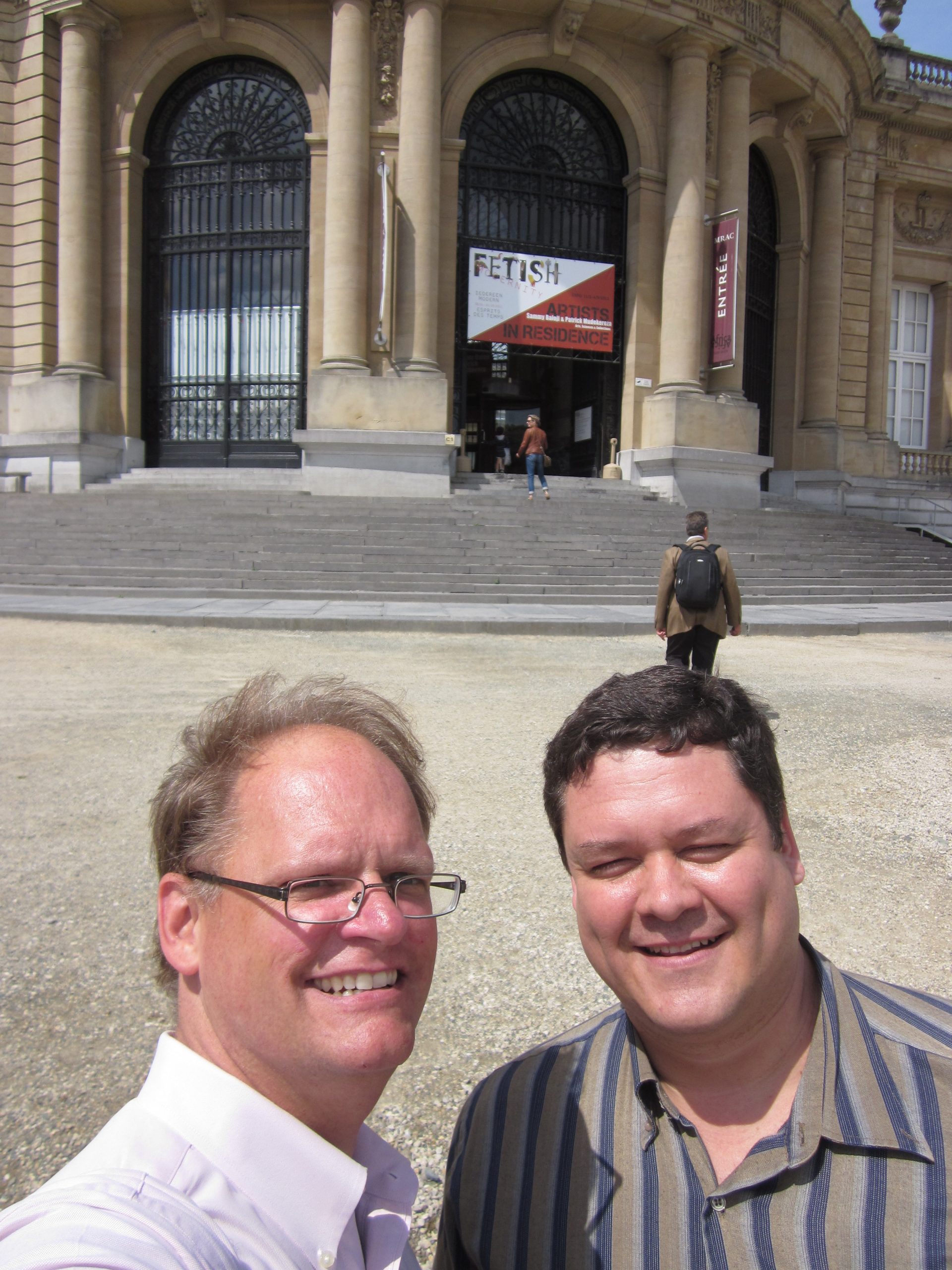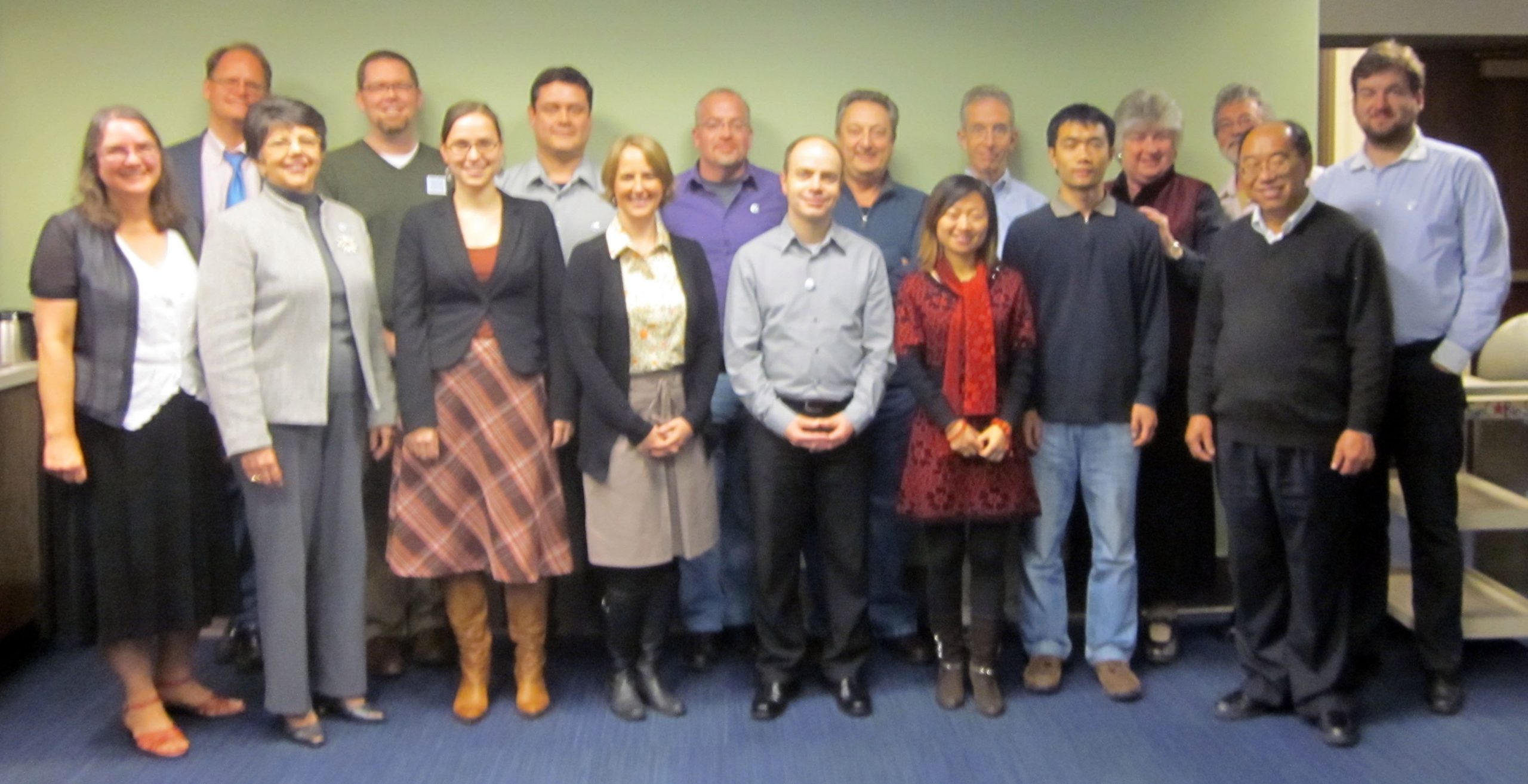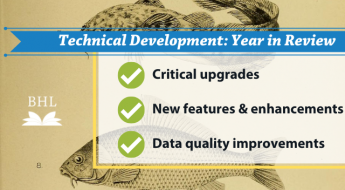William Ulate Rodríguez, past Biodiversity Heritage Library (BHL) Technical Director, died in St. Louis on September 20, 2023. William was a father, a friend, a colleague, and a passionate advocate of using the tools of bioinformatics to better understand life on our planet.

William Ulate, BHL Technical Director. Peter H. Raven Library, Missouri Botanical Garden.
William was always good company, whether it was sharing stories of his daughter, lamenting Costa Rica’s performance in the World Cup, or talking about biodiversity. On the last topic, one story he told me sticks in my mind. He told me that he visited his brother and was asked, “Tell me more about this biodiversity? What is it? Where is it?”. William said he took his brother into the backyard and said, “Look around. It’s all around us. We just need to open our eyes and see it.”
William’s professional life was all about helping us see the biodiversity around us. He advanced the idea that we need not just our eyes, but the tools of bioinformatics to see and understand the complexities of life.

BHL Europe Meeting, Belgium, 2011. With Martin Kalfatovic.
I had the privilege of working with William all around the globe, whether it was in his native Costa Rica, Nairobi, Mexico, Panama, Germany, Belgium, Italy, China, in his office at the Missouri Botanical Garden in St. Louis, or windowless conference rooms at the Smithsonian. And most frequently, in those pre-Zoom days, on a Skype video call. William may have been born in Costa Rica, but seeing him around the world, he was truly a global citizen. He moved with grace and ease in all cultures and his smile opened the world to his friendship. The world will miss him.
William’s friends and colleagues share their fond memories of his life and work.

First Global BHL Meeting. Front: Connie Rinaldo, Nancy Gwinn, Jana Hoffman, Ely Wallis, Henning Scholtz, Fenghong Liu, Zheping Xu, Jinzhong Cui. Back: Martin Kalfatovic, Chris Freeland, William Ulate, Simon Sherrin, Graham Higley, Tom Garnett, Cathy Norton, Abel Packer, Boris Jacob
BHL Global Coordinator by Chris Freeland
A grant from the Gordon and Betty Moore Foundation facilitated key global growth for BHL. BHL Technical Director Chris Freeland, principal investigator for the grant, brought William to BHL (and the United States) as its Global Coordinator. William jumped right in and shortly after starting, attended his first Global BHL Meeting in Woods Hole, Massachusetts, in September 2010. As BHL’s Global Coordinator, William’s warm personality and multilingual skills helped expand the reach of BHL in meaningful ways, especially throughout Latin America and the Global South. William was always eager to meet researchers from every part of the globe and help them and their libraries come into the community. William’s efforts as Global Coordinator helped lay the groundwork for BHL’s durable social infrastructure, and his cheerful and kind demeanor made him a delight to all who had the privilege of working alongside him.
BHL Technical Director by Martin Kalfatovic
William served as the BHL Technical Director from 2012 through 2015, taking over for Chris Freeland. In addition to the significant task of maintaining the BHL technical infrastructure, he initiated the planning for the full-text search component of BHL. William was also a key leader of three important BHL grant projects: Mining Biodiversity: Enriching Biodiversity Heritage with Text Mining and Social Media (2012-2014); The Art of Life: Data Mining and Crowdsourcing the Identification and Description of Natural History Illustrations from the Biodiversity Heritage Library (2012-2015); and Purposeful Gaming and BHL: Engaging the Public in Improving and Enhancing Access to Digital Texts (2013-2015).
He remained a frequent collaborator and trusted resource for the BHL community after leaving his Technical Director position.
Biodiversity Work in Costa Rica by Erick Mata
William Ulate Rodríguez. My student, my colleague, my world travel companion, my friend.
I met William in the early 90’s as one of my brightest graduate students in the Automata Theory and Formal Languages class at the Costa Rica Institute of Technology (ITCR). Designing Turing machines and context-free grammars served as a rather theoretical prelude to a long-term friendship and the intertwined professional careers of two computer scientists who later became heavily involved with Biodiversity Informatics (BI). BI is a rather pragmatic field that aims at applying computer and information science techniques and tools to biodiversity conservation actions. The pioneering work of Instituto Nacional de Biodiversidad (INBio) in BI and the efforts that Costa Rica was conducting to better conserve its rich biodiversity were definitely the catalysts that turned both William and myself into biodiversity informaticians. Although William had a very strong background in mathematics and theoretical computer science, his thirst for learning from other fields like biology and information sciences, alongside his desire to make an impact, quickly turned him into an expert in BI.
William, my colleague, evolved from being a BI software developer at INBio to holding senior positions at INBio itself, The Nature Conservancy, MBG, BHL, TDWG, and various other national, regional, and global BI initiatives. His extensive experience, knowledge, boundless patience, ability to work under pressure, and adeptness at networking turned William into an invaluable contact, offering valuable advice during my tenure at the Encyclopedia of Life and later while conducting research and teaching in BI back at ITCR. It was William, along with our mutual friend María Mora —another brilliant former student, colleague, and friend from INBio— who encouraged me to propose that Costa Rica and ITCR host the 2016 TDWG Annual Conference. When they offered their help, I agreed to take on the responsibility, and together, we successfully accomplished it. This marked our final collaborative project. Thank you for your invaluable insights, William.
Our collaborative international projects at INBio naturally led us to frequently travel together. Destinations like Panama, Washington DC, Copenhagen, and several others provided ample opportunities for us to share numerous professional and personal experiences. Engaging in never-ending ‘final touches’ to PowerPoint presentations late at night or just before a talk became routine, almost as habitual as ensuring we had our passports when heading to the airport. As we pursued our careers at different institutions, our shared interests in BI continued to solidify our roles as global travel companions. Yet, our focus gradually shifted towards catching up on each other’s activities and exchanging perspectives on new developments and trends. Despite differing time zones (which seemed non-existent for William), we made efforts to stay connected via Skype, Zoom, or any available form of telecommunication. Nonetheless, the value of meeting William in person, whether in Dunedin or Nairobi, was truly priceless.
I don’t have enough space to fully share my experiences and anecdotes with William as a friend. However, truthfully, these experiences are inseparable from the moments shared with the student who became a friend long before the semester’s end, the colleague who was not just a cooperative coworker but also a friendly companion, and the fellow traveler with whom I engaged in endless conversations in every corner of the world, as only good friends can.
Descansa en paz William, mi querido amigo.
Work with the World Flora Online (WFO) by Chuck Miller
William worked at INBio as Data Manager from about 2000 to 2010. I met William at a TDWG meeting and he was close with Chris Freeland, then BHL Technical Director. After INBio scaled back, I convinced William to come and work for me in St. Louis. I initially hired him as a consultant in 2010, and he worked remotely from Costa Rica until we got him an H1B visa. He ultimately got a Green Card after about 5 years. He joined Missouri Botanical Garden (MBG) in 2011. He worked with Chris Freeland on the publication imaging projects at MBG including Botanicus which developed into the Biodiversity Heritage Library. Most of the BHL system development was done at MBG with William the lead on that team.
William had started working on the World Flora Online (WFO) in 2015 and then became full time Project Coordinator for the WFO after the WFO Council voted to adopt the eMonocot software from Kew. William led the entire effort to implement eMonocot on the Google Cloud as the WFO Portal, reverse engineered the eMonocot system to figure out how it worked since there was no documentation, revised the UI, and setup the processes for ingesting taxonomic data and content/description data from providers. Thousands of test records were created to be run through the eMonocot harvesting process to figure out how it worked. The data received from data providers was so messy and error prone that he had to develop dozens of scripts to analyze and fix the errors.
The population of WFO data took years, painstakingly. He dealt with millions of records and the thousands and thousands of data issues, taxonomic issues, functional application issues, and more. He had worked with the Botanic Garden of Geneva software team for several years and then with the Royal Botanic Garden Edinburgh team for the last couple of years to improve the taxonomic backbone management. The latest development has been the Rhakhis system developed by Roger Hyam working with William’s requirements. William had just completed the migration of 16 servers from the Google Cloud to MBG’s virtual server infrastructure just before his passing. We are quite adrift now on the WFO project without him. But, his legacy will go on and we plan to memorialize him on the WFO Portal.





Leave a Comment